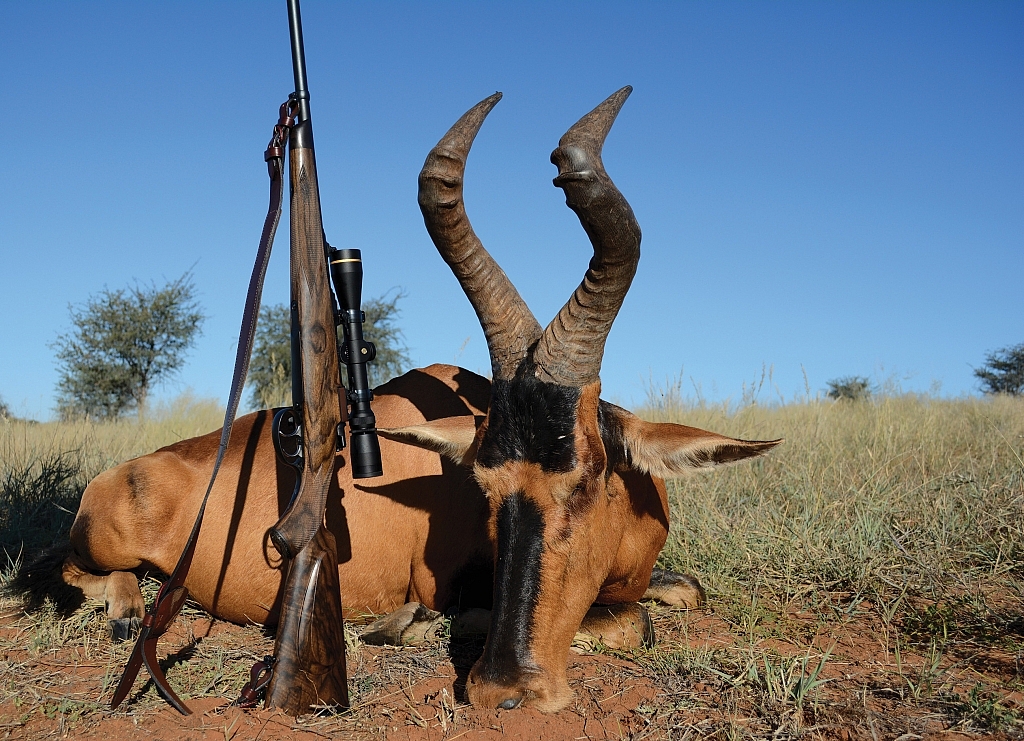
On opposite sides of the world, two hunter-philosophers honor the rifle of the great elephant hunter.
[By Peter Ryan & Roger Pinckney]
Walter Dalrymple Maitland Bell was a man in full, a Scotsman who showed adversity the proverbial stiff upper lip. Explorer, mapmaker, meat-hunter, gold miner, sailor, soldier, fighter pilot, prisoner of war, author, artist. Call him by his nickname, and you’ll suddenly remember how he made his fortune: Karamojo Bell, the ivory hunter who led yearlong safaris into country no European had mapped or even seen, before the “Lunatic Line” punched rails into Uganda and Colonel Patterson killed the Man-eaters of Tsavo. Bell shot man-eaters, too, taking his first when he was only 17.
Bell straddled the centuries, leaving footprints in both Victorian and Nuclear Ages. His experiences were never rivaled, though his conclusions were widely reviled and continue controversial to this day. Bell believed it wasn’t the power of a cartridge that made it effective, but the construction of the bullet and the placement thereof, the surgeon’s shot, if you will. And he left evidence: over 1,000 dead tuskers, most killed by cartridges modern hunters consider barely adequate for large deer.
Bell went to Africa as a boy in 1897, “at the close of the Age of Exploration,” but with, he wryly notes, “blank areas still on maps the size of France.” Bell brought his first rifle from home, a falling block .303 by Fraser of Edinburgh, “light, handy, beautifully sighted.” But, alas, extraction was inadequate, and after the cordite propellant baked in the tropical sun, unlikely. Bell was helpless until his gun-bearer fetched up the ramrod.
Bell got no closer with Rifle #2, “a single-shot Winchester .450 obtained from a wandering Greek trader.” It was likely a storied “high wall,” but we still guess at the actual caliber: .45-90, .45-110, .45-120? Bell never says.
Maybe he’d just as soon forget. “It would have been very well,” Bell notes, “except all the ammunition I got with the rifle had been black powder with that ghastly failure, the hollow copper point bullet.” A tangle with a man-eating lion continued Bell’s education. Or more to the point, a woman-eating lion, as Simba soon learned the village women went about unarmed.
One morning, no woman being handy, a lion was casting covetous eyes on the pack donkeys. A native armed with a muzzle-loader sounded the alarm, and he and Bell set out to interrupt breakfast. Noting the “ghastly bullet’s” previous explosive performance on lighter game, Bell drew a bead on the lion’s head, expecting to blow it into tiny pieces. But to Bell’s considerable dismay, the shot provoked only “a most unholy growling and lashing about.”
Bell and the native struck up the trail. The lion leaped upon the native, presenting Bell with “the most vexing of shots,” but he managed to get another bullet into the beast’s shoulder, albeit to inclusive results. The native beat a retreat and came back with reinforcements, 50 men with knives and clubs, even drums. They found the lion, too sick for further combat, and finished him off. Bell, having lost all confidence in his Winchester, was terrified throughout. To the natives, it was just another day.
Bell ordered up a postmortem, and the hands got busy with their pangas. The first bullet had entered just below the left eye and broke the lion’s jaw. From there, by all laws of ballistics, it should also have broken the lion’s neck and laid him out flat. But the “ghastly bullet” had come apart, and no single piece was big enough to do damage. Ditto the shoulder shot. It made a terrible mess, but wouldn’t break bone.
Rifle #3 was a .303 Lee Metford, a variation of the military version, with civilian stock and sights. The ammunition was cordite, with 215-grain round-nose solids. Thus equipped, Bell embarked on his first elephant safari.
It wasn’t that simple, of course. The Yukon Gold Rush and the Boer War got in the way, and Bell shot meat for the first and got captured in the second. But when things settled down, the Lee acquitted itself well: 63 bull elephants the first time out, 50 Cape buffalo for meat and leather, zebras and giraffes for trade, and two lions for threatening the pack train, all without serious incident or failure.
Bell shot numerous rifles after that: a .318 Westley Richards, a .450/400 Jeffery by Thomas Bland (with the triggers wired together so both barrels went off simultaneously!), and a 6.5 x 54 Mannlicher Schoenauer (“the most beautiful rifle ever made”).
A custom gun? After his first load of ivory, Bell could afford any rifle in the world. He chose a 7 x 57, a German Mauser, slicked up in England by Rigby and marked .275 in the English fashion. Why? Likely because Bell recalled being targeted by Boer riflemen with their M-95 Mausers some years before. Bell kept tally on that Rigby-Mauser. Expending 1,200 rounds of military full-metal jacket, the rifle took 800 elephants, with an average of 1.5 shots per kill.
Bell ignores our astonishment. Speaking from beyond the grave, he teases us with a single question: Why, of all the guns he used, did the Mauser slug make a particular whine upon exiting an elephant’s skull?
Back up, Bwana Tembo. You mean a 173-grain round-nosed .28-caliber solid, loafing along but whirling like a dervish, could shoot clean through six feet of hide and bone and brain and still go singing off into the mopane never-never, yet be audible above a riot of other enraged elephants, all with scant report and almost no recoil?
Bell’s men called it magic. I can’t peg it as physics or voodoo, but I know this: A hunter would do well with a rifle like that. And this is the story of how—and why—two men on opposite sides of the globe chose to build theirs. Two rifles, both quite different, yet of the same heart.

